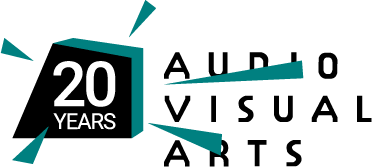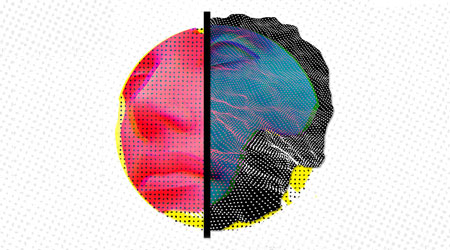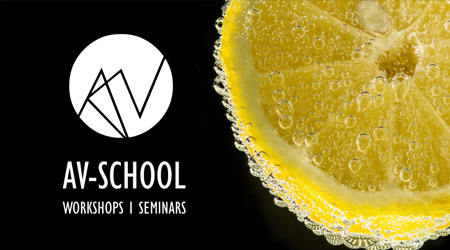Music Informatics
Teaching Staff: Zannos Ioannis
Course Code: AUD722
Course Category: Specific Background
Course Type: Elective
Course Level: Undergraduate
Course Language: Greek
Delivery method: Lectures
Semester: 7th
ECTS: 5
Teaching Units: 3
Teaching Hours: 3
E Class Page: https://opencourses.ionio.gr/courses/DAVA239/
Teaching Structure:
| Activity | Semester Workload |
|---|---|
| Lab Lectures | 26 |
| Lab Practice | 13 |
| Literature Study and Analysis | 56 |
| Practice and Preparation | 30 |
| Course Total (ECTS: 5) | 125 |
This course introduces basic principles of music computing from two points of view: First techniques for representation and generation of musical structures in computing, and second techniques of music analysis starting with western music notation encoding and ending with signal-based Music Information Retrieval. Tools introduced include SuperCollider, ChucK, Python, TensorFlow LilyPond and the Humdrum toolkit for music analysis. Examples of techniques used in music composition are given, such as randomness, Lindenmayer Systems, Finite State Automata, Markov Chains and other.
Students learn how to use computer technologies and data processing techniques to analyse and compose music. By the end of the course a student is expected to have rudimentary understanding of aleatoric techniques, neural networks and genetic algorithms as well as cellular automata for the composition of music, and of using Python and the Humdrum Toolkit for the analysis of music.
1st Week
An review of the development of computer music is given, includin examples of applications from the nineteeth century till 1990. The principles of digital representation of musical structures and of music programming languages are explained.
2nd Week
An overview of mostly open-source software for music composition and analysis, such as Music-n, Csound, HSML, SuperCollider, TidalCycles, Chuck, Humdrum, Praat, Sonic Visualiser, BeatRoot, ScoreCloud, etc. Introduction to the underlying principles and techniques used by such software.
3rd Week
Introduction to experiments in analysis and resynthesis of musical genres such as Experiments in Music Intelligence of David Cope.
4th Week
This session visits examples of use of randomness in music, with reference to their history in aleatoric music.
5th Week
This session gives an overview of the theory of genetic algorithms together with examples of their use in music composition.
6th Week
This session introduces Cellular Automata. It is shown how to play with the GOLLY cellular automata simulator (http://golly.sourceforge.net). Furthermore, examples of applications of cellular automata in composition are given.
7th Week
This session visits applications of music computing on Music Analysis. We take a closer looka at the Humdrum Toolkit (https://musiccog.ohio-state.edu/Humdrum/).
8th Week
This week introduces systems for machine-based musical improvisation and machine listening, starting from early midi-based systems such as M (Joel Chadabe), and Cypher (Robert Rowe) and moving over jazz improvisation systems such as Voyager (George Lewis) to current machine listening approaches (Dan Stowell, Nick Collins).
9th Week
We examine generative grammars as a theory for music analysis and their possible implications for rule-based composition (Fred Lehrdahl and Ray Jackendoff "A Generative Theory of Tonal Music").
10th Week
We see how Data Science has served as inspiration in music composition, and explore its relationship to Soundscape Composition and other environmentally aware genres of musical creativity.
11th Week
We examine how musical systems of tuning, scale, harmony and rhythm are modeled in the libraries of music programming systems such as SuperCollider.
12th Week
This session introduces Music Information Retrieval principles and techniques starting with the concepts of perceptual and musical sound features and showing how we apply this on sampled musical sound signals, using the SCMIR library of Nick Collins on SuperCollider.
13th Week
The final week is dedicated to an review of the course's contents and presentations of student projects.
Cope, D. 1996. Experiments in Musical Intelligence. A-R Editions.
Kapur, A., Cook, P., Salazar, S. and G. Wang. 2015. Programming for Musicians and Digital Artists: Creating Music With Chuck. Manning.
Lehrdahl F. and R. Jackendoff. 1983. A Generative Theory of Tonal Music. MIT Press.
Loy, G. 1985. "Programming Languages for Computer Music Synthesis, Performance, and Composition". Computing Surveys, Vol. 17, No. 2, June 1985
Nierhaus. G. 2009. Algorithmic Composition: Paradigms of Automated Music Generation. Springer.
Miranda, E.R. 2001. Composing Music with Computers. Elsevier.
Roads. C. 1996. The Computer Music Tutorial. MIT Press.
Roads. C. ed. 1989. The Music Machine: Selected Readings from Computer Music Journal. MIT Press.
Students are introduced to the topics of this course through on-hands experimentation wit several readily available open source tools such as Python, R, R markdown, DiagrammeR, SuperCollider, TidalCycles, EMACS, Org-Mode, Lilypond and others. Examples are shown with use of libraries in these tools such as SCMIR (MIR on SuperCollider), JITLib, and sc-hacks. The main tool for music analysis is the Humdrum Toolkit.
Enhanced by multimedia content.
The learning process is supported by the asyncrhonous e-learning platform e-class.
The evaluation of student performance is based on a final written paper, taking into account the students presentation of that presentation during the examination and the ensuing brief discussion with the examiner and the student's participation in class.
Students are expected to submit a written paper of ca 2500 words, on a topic chosen amongst the following:
- Programming languages for Music Computing, Audio Synthesis and Music Composition. History and current status.
- Research on resynthesis of musical styles or genres with computers.
- Analysis of a composition or corpus of works from a composer that uses music computing methods.
- Present an original composition made by using techniques and tools presentaed in this course.
Papers should follow the guidelines for written assignments given in the Department's website. They should include references cited and formatted following the Chicago Manual of Style v15g (Ahthor Date), as outlined here: https://web.library.uq.edu.au/files/26556/chicago15B-style-guide.pdf
Back
| << | < | April 2024 |
> | >> | ||
| Mo | Tu | We | Th | Fr | Sa | Su |
1 |
2 |
3 |
4 |
5 |
6 |
7 |
8 |
9 |
10 |
11 |
12 |
13 |
14 |
15 |
16 |
17 |
18 |
19 |
20 |
21 |
22 |
23 |
24 |
25 |
26 |
27 |
28 |
29 |
30 |
|||||



 Music Informatics
Music Informatics




